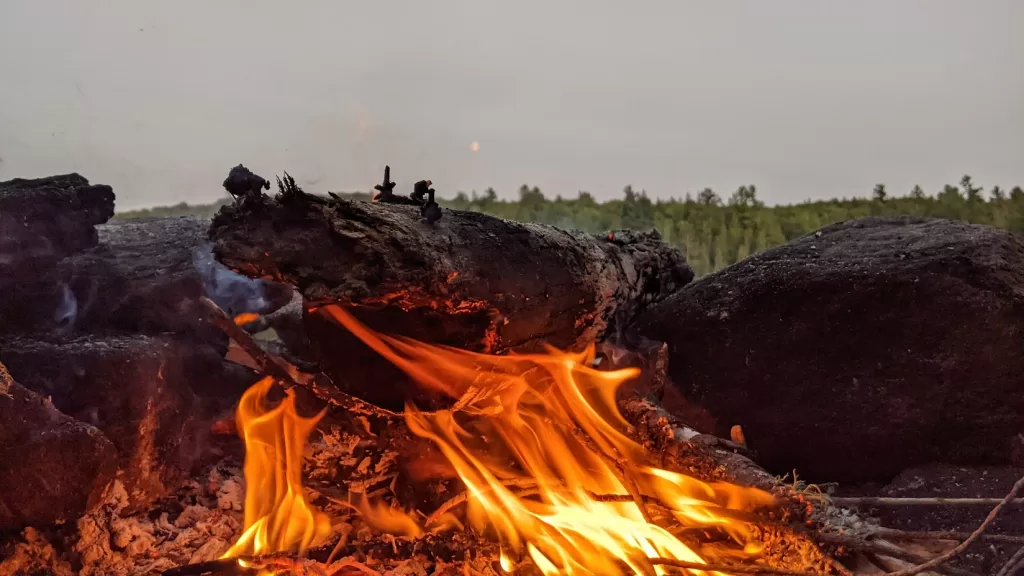
As the embers of a campfire dance under the starlit sky, the essence of camping comes alive, bringing warmth, light, and a timeless sense of connection to nature. Yet, amidst the tranquillity, responsibility rests on the shoulders of every camper—to ensure that this beautiful tradition does not turn into a destructive force. With Canada’s ongoing wildfire situation casting a shadow over forests and wildlands, adopting a proactive and responsible approach to campfire management has never been more crucial. Read on for tips on preventing wildfires while camping, or listen to the episode on Spotify or wherever you get your podcasts.
The thrill of camping in the great outdoors is unparalleled, but it comes with the duty to protect these natural landscapes for future generations. Staying informed about current regulations, fire bans, and restrictions set by local authorities or park management is the first step in this journey of respectful camping. These measures are not mere formalities but essential guidelines designed to safeguard both the environment and the communities surrounding camping areas.
Safety begins with preparation and awareness. When setting up a campfire, maintaining a safe distance from flammable materials and clearing away dry leaves and debris around the fire pit can significantly reduce the risk of unintended fire spread. Tools like shovels should always be at hand, ready to help prevent or control a fire if it begins to extend beyond its intended boundaries. Designated areas, such as metal rings or rock pits, are there for a reason—they contain fires and prevent them from reaching the surrounding brush.
The dangers of leaving fires unattended cannot be overstated. Under the right conditions, a seemingly harmless smouldering fire can easily become a rampant wildfire. It’s not just about the visible flames; underground smouldering poses a significant risk as well. Therefore, extinguishing fires properly is paramount.
Moreover, the practice of responsible campfire management extends to selecting appropriate firewood and considering wind direction to minimize risks. The transportation of firewood is discouraged due to the risk of spreading invasive species like the emerald ash borer, which poses a significant threat to forest health.
In times when fire bans are in place or dry conditions increase the risk of wildfires, alternative cooking methods become invaluable. Alcohol stoves, portable stoves with on-off valves, and other burner options offer safer alternatives that comply with regulations and ensure the safety of both campers and the environment. Always having the means to control and extinguish fires immediately offers flexibility and peace of mind, allowing campers to focus on the joys of outdoor adventures.
Camping is about enjoying the moment and leaving no trace, respecting neighbours, and ensuring that the natural beauty that drew us to the wilderness remains undisturbed. By adhering to fire regulations and practicing leave-no-trace principles, we contribute to a culture of safety and preservation.
In the spirit of responsible camping, let us embrace these practices with enthusiasm and commitment. By managing our campfires wisely, we protect the forests we love, ensuring that they continue to thrive and inspire adventurers for generations to come. Let’s make every camping trip a testament to our respect for nature and our dedication to preserving its beauty and vitality. Happy camping!
Listen to the episode on Spotify, or wherever you get your podcasts.
